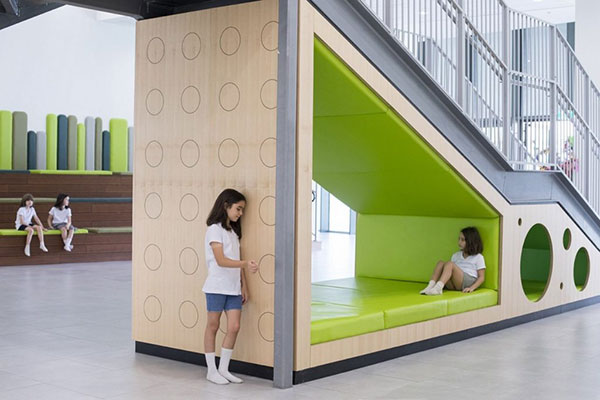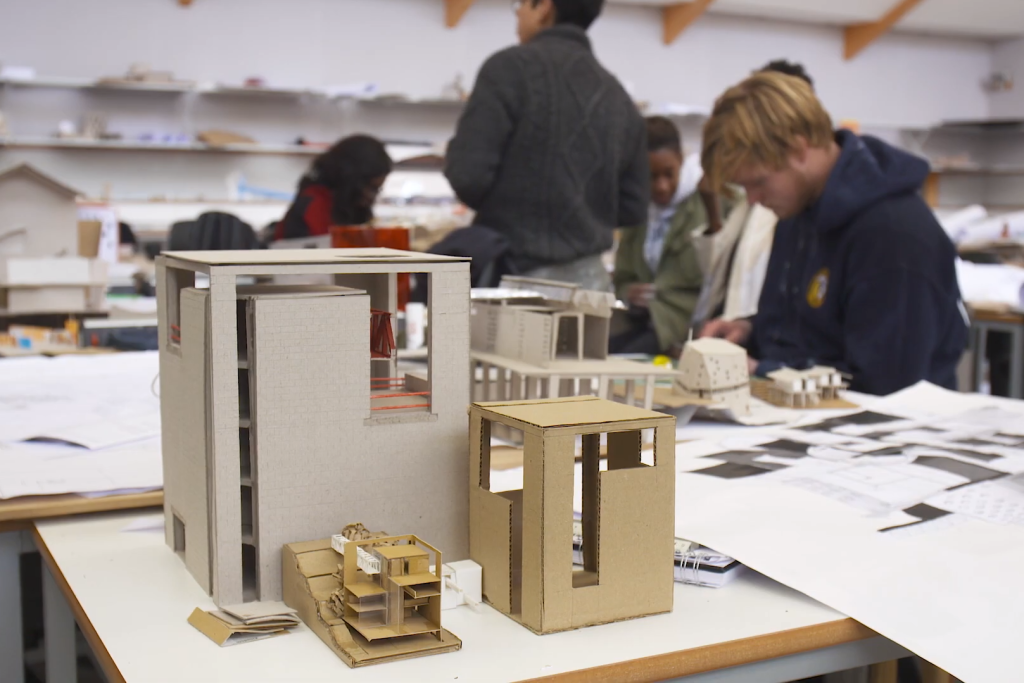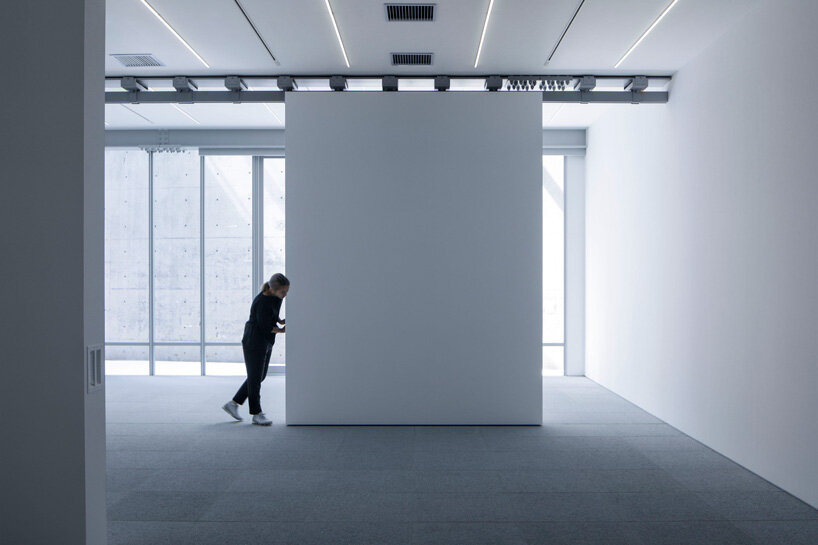Architectural education is critical in determining how the built environment will develop. The discipline is changing, and new developments in design thinking, technology, sustainability, and social dynamics are all reflected in architectural education. The study of architecture encourages original approaches to problem-solving. Pupils learn to evaluate intricate problems, consider various viewpoints, and develop creative design solutions for the built environment.
Architects play a critical role in creating the physical spaces where people live, work, and play. A degree in architecture gives people the information and abilities to create aesthetically beautiful and functional spaces while also being sensitive to people’s needs. Cultural and historical settings are studied as part of architectural education. Architects acquire the ability to recognise and incorporate cultural components into their designs, promoting a feeling of self and safeguarding legacy.
Students studying architecture are exposed to state-of-the-art tools and technologies, which empower them to use innovations like parametric design, BIM, and sustainable construction practices. To solve environmental concerns, sustainable design methods are emphasised in architectural education; graduates can contribute to a more sustainable future by designing eco-friendly and energy-efficient buildings.
Architects significantly impact communities. In the end, social responsibility, community involvement, and human-centred design are prioritised in architectural education, improving the well-being and standard of living of various people. Engineering, sociology, psychology, and environmental science professionals can collaborate with architects through architectural education, encouraging multidisciplinary cooperation. This kind of cooperation aids architects in tackling complex problems and producing comprehensive answers.

Critical thinking abilities are developed by architectural education. Students learn to assess architecture’s effects on people and society, comprehend the ramifications of design choices, and analyse spatial linkages. Future architects develop a feeling of ethical duty through architectural education. To address ethical concerns like social justice, inclusion, and environmental stewardship, students are taught to consider the ethical implications of their designs.
A global perspective is frequently encouraged in architectural education. Through exchange programmes, students may be able to experience life abroad and gain an understanding of the various cultural influences on architecture and design. A background in architecture lays the groundwork for several career pathways, including traditional architectural practice, research, academia, urban planning, and entrepreneurship. Graduates can decide to pursue creative endeavours or launch their architecture firms.
Architectural Education and Emerging Trends
Building Information Modeling (BIM) is growing in importance in architecture education. Working with 3D models enhances student collaboration and productivity during the design and building phases. Computational thinking and technologies for parametric design are becoming more popular. Architects may produce intricate and creative designs using programmes like Rhino and Grasshopper.
Green building principles place a strong emphasis on ecologically responsible and sustainable design. The integration of renewable energy sources, low-impact building materials, and energy-efficient building systems are all taught to students. The focus of regenerative design is changing from sustainability to restoration, renewal, and revitalization of ecosystems through architectural interventions.
Multidisciplinary cooperation is becoming more and more ingrained in architectural education. To tackle complex problems, students collaborate with experts in various disciplines, including environmental science, engineering, and sociology. The field of community-centred design addresses the increasing focus on creating environments that consider social and cultural factors. Students should get involved in the community and attend to the needs of various groups.
Human-centred design programmes strongly focus on the need to produce designs that improve people’s quality of life and understand human behaviour. Students are encouraged by many architecture programmes to participate in exchange programmes and group projects that provide them exposure to other countries. This aids in pupils’ understanding of various cultural influences on architecture. Architecture education addresses global issues, including socioeconomic injustice, urbanisation, and climate change. It is taught to students to act locally and think globally. Project management, good communication, and business acumen are given more weight in architectural education. These abilities are crucial for architects to manage real-world projects’ complexities successfully.
The use of remote learning technologies has increased since the COVID-19 epidemic. Design evaluations and presentations increasingly use virtual reality (VR) and augmented reality (AR). Ethical issues are included in architectural education, focusing on architects’ obligations to the environment, local people, and future generations. Architectural education embraces crisis-responsive design principles in response to the growing knowledge of natural disasters and pandemics to develop durable and adaptive structures.
Many architectural programmes emphasise research, encouraging academics and students to look for novel approaches to architectural problems. Incorporating cutting-edge technology like robots, 3D printing, and artificial intelligence into architectural education and research is growing.
Students who study architecture are prepared for various job opportunities, including entrepreneurship. Courses on launching and running architectural practises are available in some curricula. Architectural education aims to give students the information and abilities they need to take advantage of today’s opportunities and challenges. Key themes influencing the future of architectural education include the use of technology, an emphasis on sustainability, interdisciplinary collaboration, and a dedication to ethical and responsible design.
Smart Building and Adaptive Reuse
The design, usability, and sustainability of built environments are all impacted by smart buildings, defined as intelligent or smart structures incorporating cutting-edge technology into architectural projects. The use of smart building technologies helps achieve sustainability objectives. They frequently play a significant part in getting green building certifications by adding technologies like energy-efficient HVAC systems, smart lighting, and renewable energy integration.

Adaptive reuse gives an existing building or structure a new purpose instead of dismantling it; this environmentally friendly design method entails imaginatively changing and modifying buildings to suit modern requirements without sacrificing their architectural, cultural, or historical significance. Since the existing structure serves as a foundation and framework, adaptive reuse may be more affordable than new construction. This is because it may result in material and construction time savings.
Biophilic Design
Biophilic design is a cutting-edge method of architecture and interior design that aims to foster a sense of connection between humans and the natural world by introducing raw materials, processes, and aspects into the built environment. The genuine human desire to connect with the natural world and other living systems is known as “biophilia.” The objective of biophilic design is to improve people’s health and efficiency by designing surroundings that have elements of natural settings.
Conclusion
The field of architectural education is at the front of a dynamic and transformative epoch in which customs and new trends converge to influence the built environment of the future. When students embark on their architectural careers, they encounter a world defined by technological innovations, the need for sustainability, and a significant trend toward interdisciplinary cooperation.
Digital technology, such as Building Information Modeling (BIM) and parametric design, ushers in a new era of extraordinary creativity and efficiency in architectural education. Students are cultivating a generation of architects capable of tackling complex problems with innovative solutions by learning the skill of design and mastering the instruments that characterise modern architectural practice.





